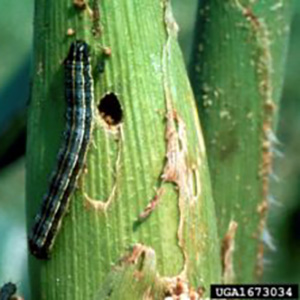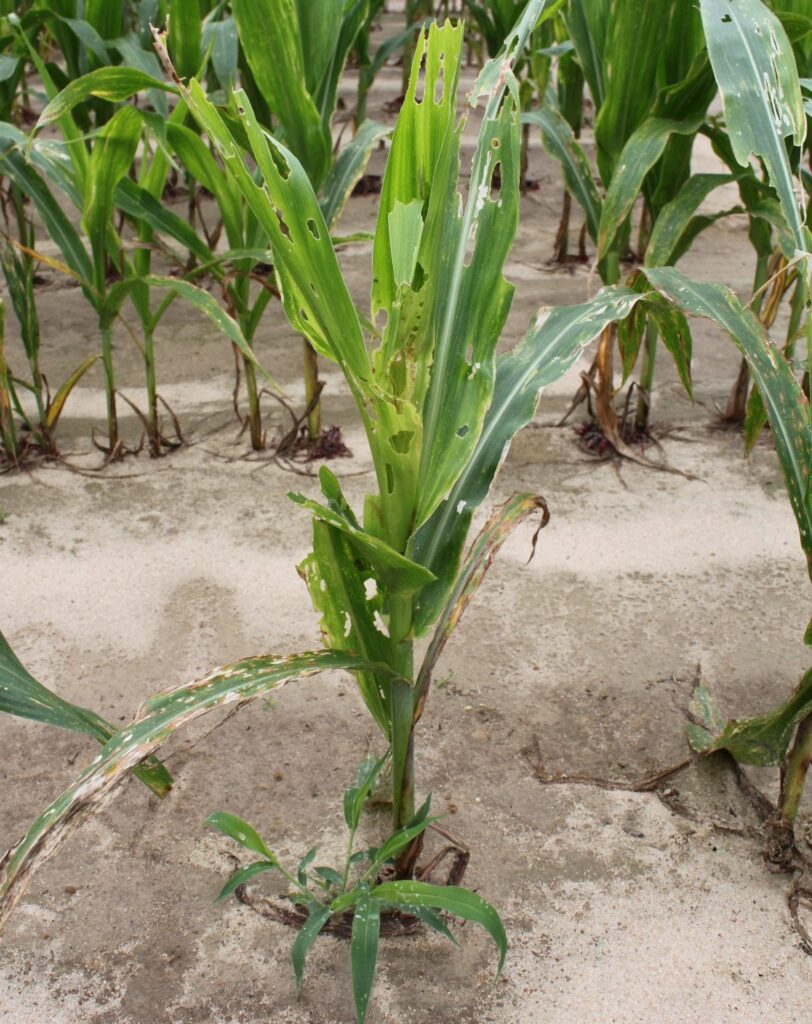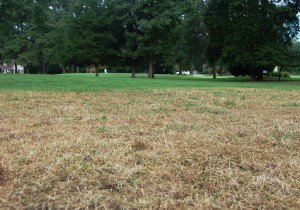Main Content
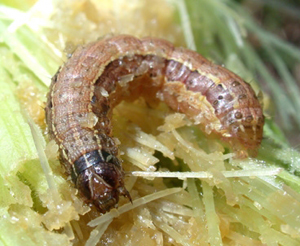
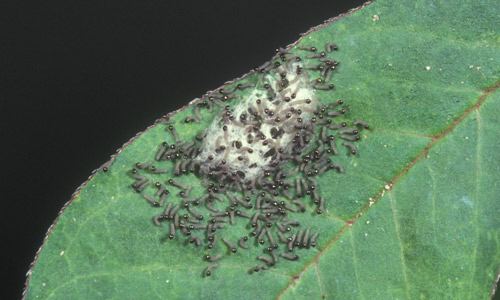
Entomologists throughout the region have sounded the alarm – the fall armyworm population has reached outbreak level this year. Severe damage was reported in New York where armyworm larvae defoliated 50-acres of alfalfa, seemingly overnight. Significant damage to lawns and managed turfgrass has been observed in neighboring states.
Fall armyworm is a caterpillar pest of 80+ crop and landscape plants including corn, tomato, cabbage, cucumber, sweet potato, turf grasses, and many others. These voracious eaters are aptly named, as they march in groups and cause significant damage in a short period of time.
Fall armyworm can only overwinter in the Gulf Coast area where overwintering pupae emerge as adult moths in spring. These moths migrate to our area with storm winds from the south. Dry weather in the south produced greater numbers of armyworm moths this year and, coupled with the frequent storms and an early hurricane season, lead to greater risk of devastation.
When the moths arrive, usually in July in southern New Jersey, the females will lay up to 1,000 eggs on desirable plants. The larvae hatch in a matter of days and begin feeding by the thousands near the ground. Over the next 3-4 weeks the larvae plump up and go through 6 instar stages. Following the last instar stage, larvae dig in the ground to pupate and emerge approximately 2 weeks later as adult moths. Depending on the time of arrival, there can be two generations per year in New Jersey.
Farmers should be aware of greater risk of damage from fall armyworm this year and know when and how to address their presence. Consult commercial crop production guides for information on economic thresholds and management strategies for fall armyworm.
